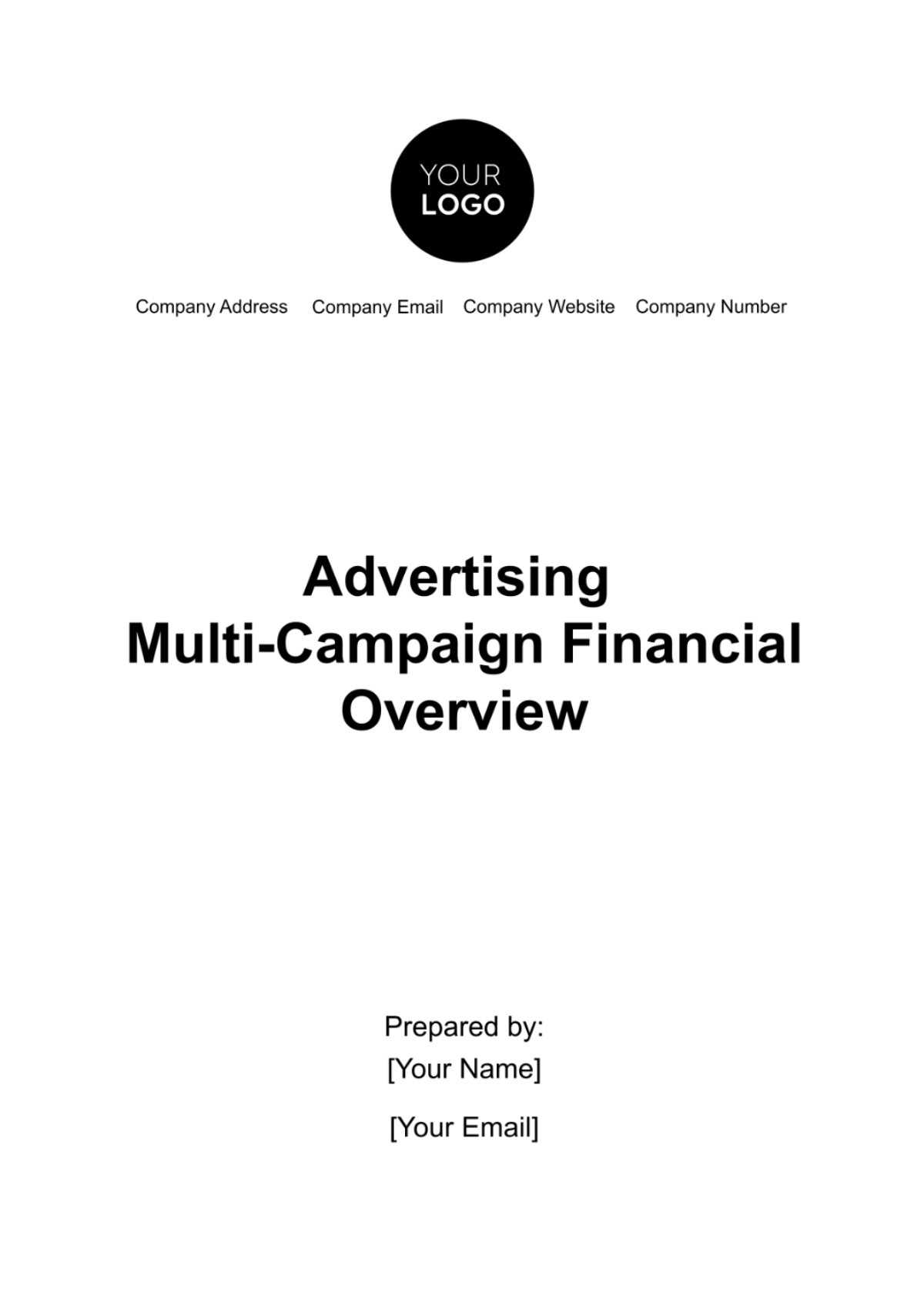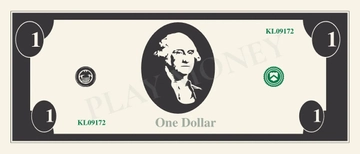Free Advertising Multi-Campaign Financial Overview

I. Introduction
In the ever-evolving landscape of advertising, where the dynamics of market trends and consumer preferences are in constant flux, the strategic allocation of financial resources becomes paramount. This Advertising Multi-Campaign Financial Overview, meticulously prepared for [Your Company Name], offers a comprehensive analysis of the financial performance and allocation across our diverse range of advertising campaigns conducted in the fiscal year 2051. It is crafted to provide a granular view of how our financial investments have been distributed and utilized across various platforms and initiatives.
This report delves deep into the intricate details of our advertising expenditures, examining not just the amounts allocated and spent but also the return on investment (ROI), reach, and conversion rates achieved by each campaign. The objective is to paint a clear picture of the financial footprint of our advertising efforts, assessing both their efficacy and efficiency. By dissecting and analyzing these financial aspects, we aim to glean valuable insights to guide our decision-making process for future campaigns.
The necessity of this report stems from our commitment to not only maintaining transparency in our financial operations but also to ensuring that every dollar spent on advertising yields maximum impact. In a competitive business environment, understanding the financial underpinnings of our advertising strategies is crucial for staying ahead. This overview serves as a vital tool for [Your Company Name], aiding in the evaluation of past strategies and in the formulation of more effective, data-driven advertising plans for the future.
II. Campaign Financial Summary
A. Overview
The Campaign Financial Summary is a critical component of the Advertising Multi-Campaign Financial Overview for [Your Company Name]. This section provides a comprehensive summary of the financial performance of our multiple advertising campaigns conducted during the fiscal year 2051. It highlights key financial metrics, including the total budget, total expenditure, return on investment (ROI), reach, and conversions for each campaign. The purpose of this summary is to provide a clear and concise overview of our advertising investments and their outcomes.
Campaign Name | Total Budget | Total Expenditure | ROI | Reach | Conversions |
Campaign A | $500,000 | $450,000 | 130% | 2M | 40,000 |
Campaign B | |||||
Campaign C |
B. Financial Allocation and Utilization
Each campaign's budget allocation and subsequent expenditure reflect our strategic planning and execution in the advertising domain. The figures in this summary show how effectively the allocated budget was utilized in achieving the desired marketing objectives.
C. Analysis of ROI
The ROI figures in the table are indicative of the success of each campaign in generating value relative to the investment made. For instance, Campaign A, with a 130% ROI, indicates that for every dollar spent, $1.30 in value was generated, signifying a profitable campaign.
D. Reach and Conversions
The reach and conversions data provide insights into the effectiveness of the campaigns in engaging the target audience. A higher reach, as seen in Campaign B with 5 million, suggests a broader audience was engaged. At the same time, the conversion metric indicates the number of desired actions completed by the audience, such as purchases or sign-ups.
E. Comparative Analysis
Comparing the campaigns, it's evident that each has its unique strengths. For instance, Campaign C, though the smallest in budget, achieved the highest ROI, suggesting a highly efficient use of resources. Campaign B, on the other hand, had the largest reach and highest number of conversions, indicating its effectiveness in audience engagement on a larger scale.
This summary not only serves as a report on past performances but also as a guide for future campaign planning. Understanding the financial dynamics of these campaigns aids in making informed decisions, allowing for adjustments and improvements in future advertising strategies to optimize both reach and returns.
III. Campaign Budget Allocation
A. Allocation Details
In the advertising industry, how a campaign's budget is allocated across various channels is as crucial as the total budget itself. This section of the Advertising Multi-Campaign Financial Overview for [Your Company Name] provides an in-depth look at the budget allocation for each of our major campaigns in the fiscal year 2051. The allocation is meticulously planned to leverage the unique strengths of different advertising channels, ensuring that each campaign achieves its specific objectives effectively.
B. Strategic Channel Allocation
The table under this section, 'Campaign Budget Allocation', presents a detailed breakdown of how the budget for each campaign is distributed among Digital Marketing, Traditional Media, Outdoor Advertising, and Miscellaneous expenses.
Campaign Name | Digital Marketing | Traditional Media | Outdoor Advertising | Miscellaneous |
Campaign A | $200,000 | $150,000 | $50,000 | $50,000 |
Campaign B | ||||
Campaign C |
C. Budget Allocation Justification and Analysis
Digital Marketing
1.1. Campaign A: With a focus on social media and search engine advertising, this allocation is designed to target a tech-savvy audience.
1.2. Campaign B: This larger allocation takes advantage of an extensive online presence, including video advertising and influencer collaborations.
1.3. Campaign C: A modest allocation focusing on targeted email marketing and retargeting ads.
Traditional Media
2.1. Campaign A: This budget emphasizes local television and radio spots to reach a broad yet regionally focused audience.
2.2. Campaign B: A significant portion is allocated to national television campaigns and print media to maximize reach.
2.3. Campaign C: Limited to local newspapers and radio, aligning with the campaign's targeted geographic scope.
Outdoor Advertising
3.1. Campaign A: Investments in billboards and transit advertising in key urban areas.
3.2. Campaign B: Extensive use of billboards, bus wraps, and digital screens in major cities.
3.3. Campaign C: Selective use of outdoor advertising in specific localities for targeted impact.
Miscellaneous
4.1. Campaign A: Includes expenses for the production of advertising materials and contingency funds.
4.2. Campaign B: This includes high-end production costs for TV ads and a reserve for market research.
4.3. Campaign C: Allocation for unexpected expenses and small-scale promotional events.
D. Future Projections and Adjustments
This budget is dynamic and subject to change based on the ongoing performance analysis of each campaign. Regular reviews will be conducted to assess the effectiveness of the allocated funds and make necessary adjustments to ensure optimal use of the budget and achievement of campaign goals.
IV. Cost Efficiency Analysis
A. Cost Per Acquisition
In our ongoing effort to maximize the return on investment for our advertising campaigns, we focus on the Cost Per Acquisition (CPA) metric. This critical measure helps us understand the efficiency of our spending in terms of how much we invest to gain a single customer.
Campaign Name | Total Expenditure | Conversions | CPA |
Campaign A | $450,000 | 40,000 | $11.25 |
Campaign B | |||
Campaign C |
B. In-Depth Analysis of CPA for Each Campaign
Campaign A - CPA
1.1. Overview: With a total expenditure of $450,000 and 40,000 conversions, Campaign A's CPA stands at $11.25. This figure, though higher than the industry average for similar campaigns, reflects the campaign's extensive reach through traditional and outdoor advertising channels.
1.2. Optimization Strategies: To improve the CPA, we propose a strategic shift towards more targeted digital marketing efforts. Enhanced focus on social media and search engine advertising could lead to more cost-effective customer acquisitions.
Campaign B - CPA
2.1. Overview: Campaign B showcases remarkable efficiency, boasting a CPA of just $7.00, significantly lower than industry norms. This success can be attributed to the campaign's balanced integration of digital and traditional media, resonating well with a broad audience base.
2.2. Long-Term Viability: While the low CPA is commendable, it's crucial to analyze its sustainability. We will continue to monitor customer lifetime value against acquisition costs to ensure ongoing efficiency.
Campaign C - CPA
3.1. Overview: With a CPA of $8.00, Campaign C operates at moderate efficiency. This campaign, with its limited budget of $250,000, has effectively utilized targeted advertising strategies to achieve 25,000 conversions.
3.2. Enhancement Approach: We recommend thoroughly reviewing the digital marketing strategies employed in this campaign. Fine-tuning targeting methods and optimizing ad spend could further reduce the CPA.
C. Benchmarking Against Industry Standards
Comparison Analysis: When comparing our CPA values against industry benchmarks, we find that Campaign B is a front-runner in cost efficiency. At the same time, Campaigns A and C have room for improvement.
Actionable Insights: This benchmarking exercise helps us identify potential areas for cost reduction and efficiency improvements.
D. Looking Ahead: Strategy Adjustments and Projections
Dynamic Monitoring: We will continue to monitor CPA trends across all campaigns, ensuring that we remain agile and responsive to market changes.
Responsive Strategy Modification: As market dynamics evolve, we are prepared to reallocate budgets and modify campaign strategies to maintain or improve CPA.
Investment in Advanced Analytics: To further enhance our understanding of customer acquisition costs and behavior, we will increase our investment in data analytics tools and expertise.
In conclusion, our analysis of CPA across different campaigns reveals valuable insights into the effectiveness of our advertising strategies. By continuously evaluating these metrics against industry standards and adjusting our approaches accordingly, we aim to achieve the most cost-effective and impactful advertising outcomes for [Your Company Name].
V. Recommendations for Future Campaigns
Following a comprehensive financial analysis of our recent advertising campaigns, we propose a set of strategic recommendations to enhance both the cost-effectiveness and overall performance of our future campaigns. These recommendations are tailored to capitalize on identified strengths and address areas of improvement, ensuring that each campaign delivers optimal returns on investment.
A. Optimize Digital Marketing Spend to Reduce CPA
Digital marketing presents a dynamic and cost-effective channel for customer acquisition. However, it demands strategic allocation and constant optimization to ensure the best returns. We can achieve this:
Data-Driven Targeting: Utilize advanced analytics to identify and target the most responsive audience segments. This approach ensures that our digital ads reach potential customers most likely to convert, reducing the overall CPA.
Campaign Personalization: Develop more personalized ad content that resonates with different audience segments. Tailored messaging has been shown to improve engagement and conversion rates significantly.
Performance Analytics: Implement real-time tracking and analytics to monitor the performance of digital campaigns. This enables quick adjustments in strategies and tactics to improve efficiency continuously.
Emerging Technologies: Explore emerging digital marketing technologies, such as AI-driven programmatic advertising, to enhance targeting accuracy and ad performance.
B. Increase Budget Allocation for Campaigns with Higher ROI
Allocating more resources to high-performing campaigns can exponentially increase overall returns. To effectively implement this:
ROI Assessment: Continuously assess the ROI of all campaigns. Campaigns consistently delivering a high ROI should be prioritized for increased budget allocation.
Scalability Analysis: Before increasing the budget, ensure that the campaigns have the potential to scale without diminishing returns. This involves analyzing market saturation and the scalability of the campaign's target audience.
Flexible Budgeting: Adopt a more flexible budgeting approach, allowing for the reallocation of funds from underperforming campaigns to those yielding higher ROI.
C. Regular Review and Reallocation of Budgets
Regular reviews of campaign performance are critical in ensuring funds are allocated to the most effective areas. Here’s how we can approach this:
Performance Audits: Conduct monthly or quarterly audits of all campaigns to assess their effectiveness and efficiency.
Dynamic Allocation: Develop a responsive budgeting system that allows for quick reallocation of funds based on the latest performance data.
Learning and Adaptation: Use insights gained from these reviews to adapt and refine future campaign strategies. Understanding why certain campaigns underperform or outperform can inform more effective campaign designs.
Implementing these recommendations requires a balanced approach, combining data-driven decision-making with creative and innovative advertising strategies.
VI. Conclusion
The Advertising Multi-Campaign Financial Overview for [Your Company Name] provides valuable insights into the financial aspects of our advertising efforts. By continuously analyzing and adjusting our strategies, we can ensure more effective and efficient use of our advertising budget, driving better results and higher ROI.
- 100% Customizable, free editor
- Access 1 Million+ Templates, photo’s & graphics
- Download or share as a template
- Click and replace photos, graphics, text, backgrounds
- Resize, crop, AI write & more
- Access advanced editor
Keeping track of your multiple advertising campaigns has never been this easy with our Advertising Multi-Campaign Financial Overview Template! This fully editable and customizable overview from Template.net ensures you capture every important detail. The AI Editor Tool makes editing a breeze, allowing you to provide a comprehensive financial overview immediately!





























